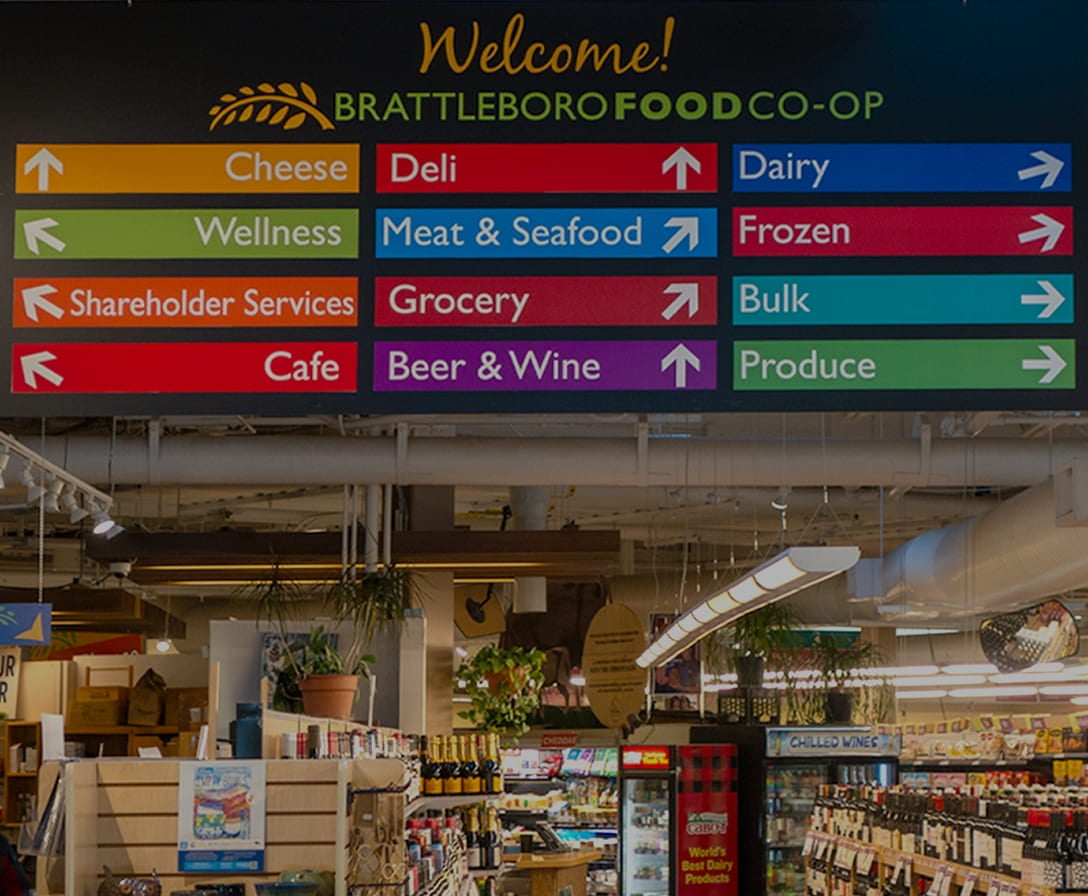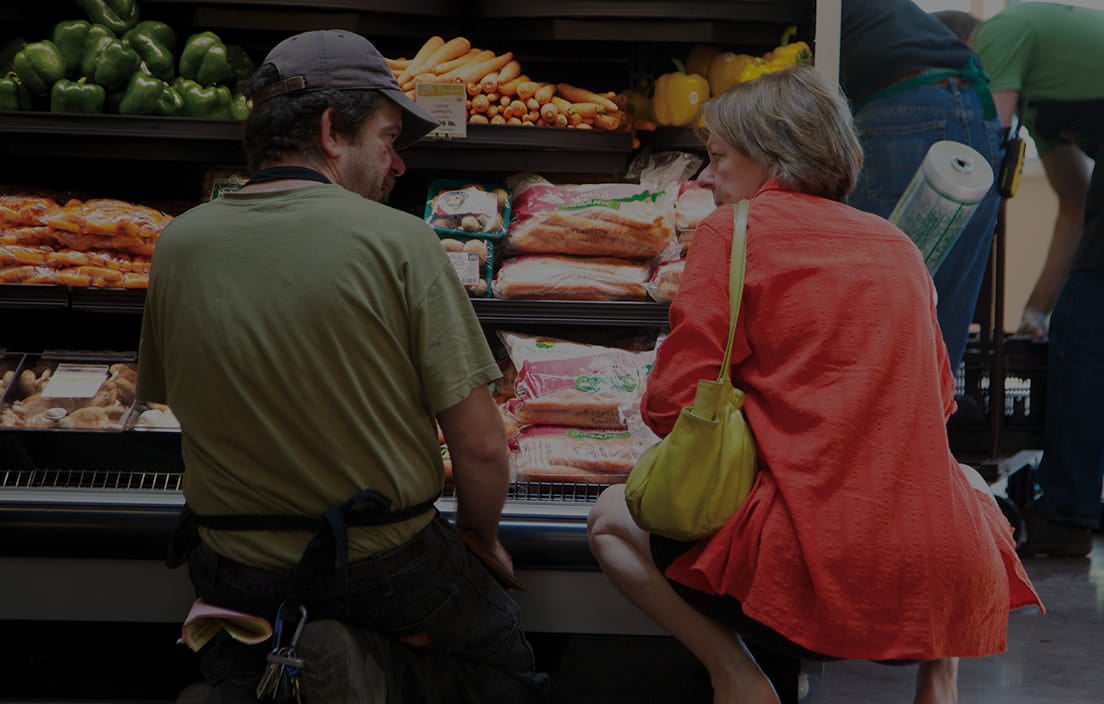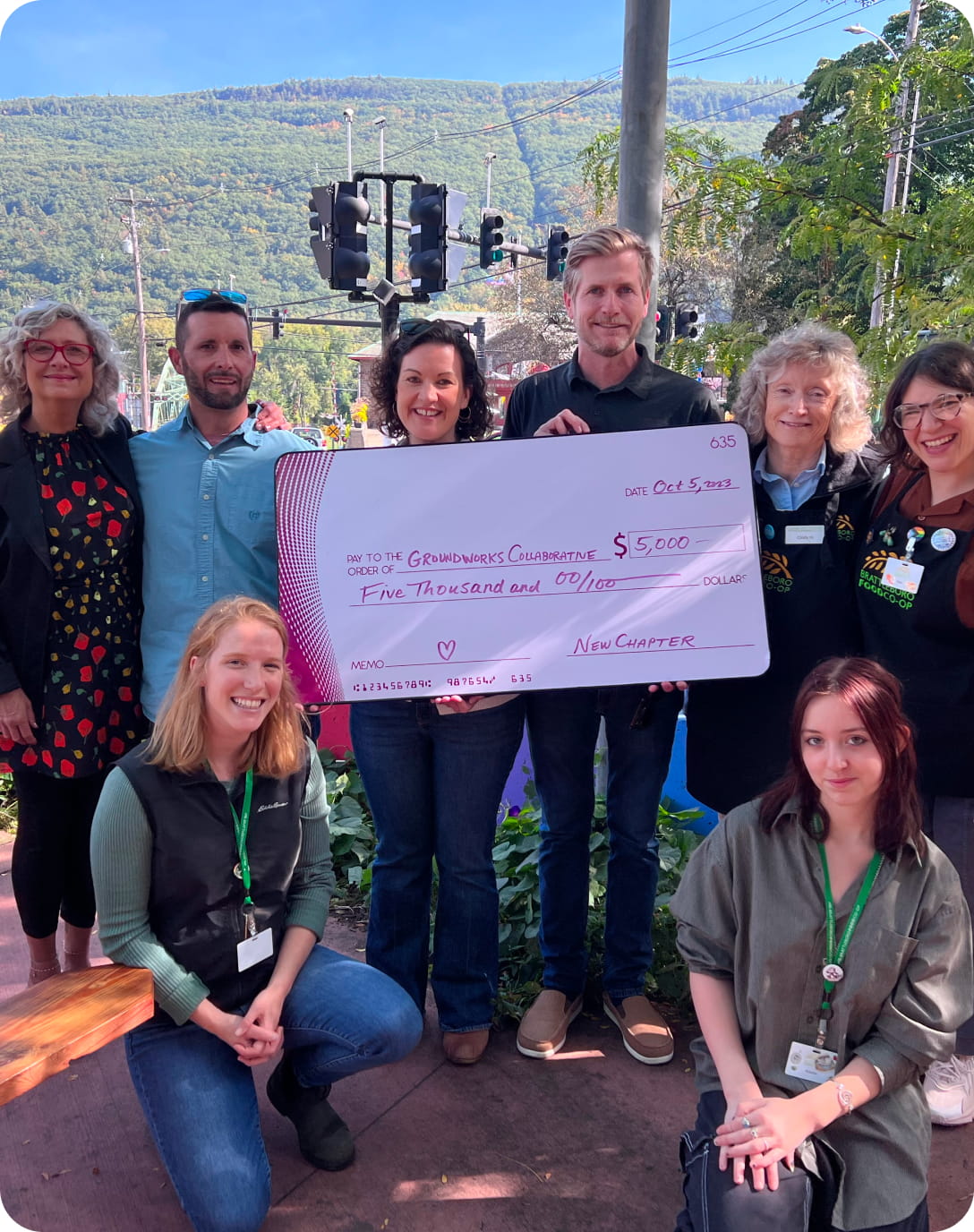Measuring Impact
I have previously referred to the process that our board uses to measure how well we are achieving our goals at nearly every board meeting. As the one charged with the execution of these goals, this methodology forces me to quantify our success. Few assessments are more important than monitoring the overarching “Ends” policies, which hopefully you reviewed and commented on at our annual meeting last month. These policies are quite extensive in their scope, and challenging to encapsulate in an annual report, but reviewing the data is fascinating and useful.
Regarding the first policy, we measure our local, organic, and fair trade sales in a variety of ways. Here are a few data points: we increased our sales of local product last year by 7%, to 20.4% of all store sales, not including products that we make in house or use in prepared foods offerings like the salad bar or sandwich station. The sale of organic products grew 6.4%, to over 30% of total sales, while fair trade products grew to over half a million dollars. We have been frustrated with our computer system’s capability (or lack thereof) in tracking these products well, due to limitations on how many attributes it allows us to manage, so our IT team is hard at work making delicate changes to our system to enable us to track these categories more effectively; we are also adding “co-op” as an attribute, so we can measure how well we are supporting our fellow cooperatives, such as Equal Exchange, Real Pickles, and La Riojana, thereby executing the cooperative principle of cooperation among cooperatives. We hope to reflect these attributes on your receipt as well, as your choices are at the root of these programs.
We also did our most rigorous price comparison of the year, to see how we are doing on like items with some of our competitors. I am happy to report that the results of this diligence continue to improve our prices. In looking at our “shopping cart” comparison, which takes items from multiple departments much as a shopper does, we improved our lot, with one local conventional store still challenging us on shelf prices, but in all other cases, we came out with lower prices. That is not counting the discounts at the register that many of you enjoy, either as a working shareholder, an elder, a senior, or a Food for All participant. With discounts, we blew everyone else out of the water! We also noted that our store-wide gross margin last year dropped 0.2%, reflecting our buyers’ attention to pricing. Needless to say, this is a razor-thin balance beam, as we also need to continue our improved profitability. But I was very pleased with our performance in these areas, and hopefully you have noticed this too.
And how do we measure how welcoming we are? One way is to look at how many folks decided to become BFC shareholders, and we saw a significant uptick (5.6%) over last year. Another way is to compare average transactions, to see if more people are coming in the store. The answer is that for last year, we actually saw a small downturn in transactions, even while we saw an increase in both new shareholder signups (up 5.6%) and average basket size. This is a little perplexing; we will continue to monitor these trends. We also noted an increase in community groups tabling at the Co-op, consistent use of the community room, and 150% increase of the hours credited to other non-profits in the community for shareholder hours. In addition, we had over $8,800 dollars from our bag-a-bean donations distributed to thirty-one non-profits throughout the community, so that helps people associated with those non-profits to know that the Co-op values their organization’s work, and they, by extension, feel welcome. But there is no doubt that feeling welcome in our store has everything to do with our staff. We continue to emphasize good customer engagement with all of our staff, through an extensive orientation program and regular reinforcement. I think we have wonderful staff members throughout the organization who are willing participants in our friendly store culture. Many of you have favorites with whom you have developed friendships over the weeks and years, and we too value all the relationships we have made with you over a slice of cheese, a type of milk, and a filet of Faroe salmon. We have peace flags in our store, and a “Black Lives Matter” sign in our window. We wish to communicate to our fellow community members and those passing through that we are a safe and welcoming place to shop for groceries and meet up with friends.
The fact that we prioritize values like local production and provide a welcoming space sets us apart from other grocery stores. The fact that we measure and report actual data related to these priorities sets us apart as well, and allows us to tell you how your participation as a shopper in our store makes a real difference, day in and day out. And you, too, can tell your friends how these seemingly small daily decisions aggregate into very real economic well-being in our greater community. Again, our story is powerful, and is making a difference in a very real way. Next month, I will report on a few other metrics that we have been tracking to evaluate our performance on other ends policies.
Thank you for doing your part!
 By Sabine Rhyne, General Manager
By Sabine Rhyne, General Manager
About Producer of The Month

Shop Online

On Sale Now!

